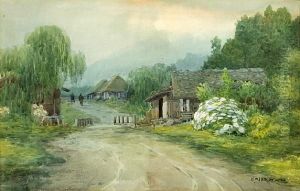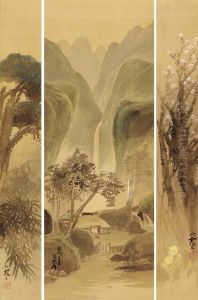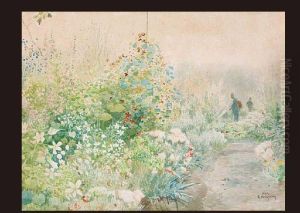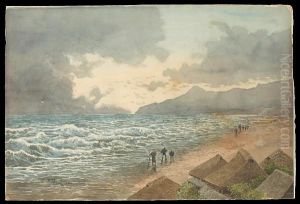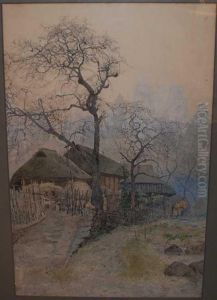Maruyama Banka Paintings
Maruyama Banka was a Japanese artist known for his contributions to the Nihonga style, a term used to describe Japanese paintings made in accordance with traditional techniques and concepts. Born in 1871, Banka's career spanned a period of significant transition in Japan, from the Meiji era through to the Taisho and early Showa periods, a time when the country was rapidly modernizing and opening up to Western influences. Despite these changes, Banka remained deeply rooted in the traditional Japanese aesthetic, drawing inspiration from the beauty of the natural world and the seasons, which are central themes in Nihonga painting.
Banka's work is characterized by its delicate beauty and the use of traditional pigments derived from natural materials. He was adept at capturing the ephemeral qualities of nature, such as the fleeting bloom of cherry blossoms or the serene beauty of a moonlit night. His paintings often evoke a sense of wistfulness and nostalgia, reflecting the Japanese concept of mono no aware, or the awareness of the impermanence of things. Banka was also known for his skill in kachō-ga (bird-and-flower paintings), a genre of Japanese art that dates back to the Heian period (794-1185).
Throughout his career, Maruyama Banka was actively involved in the art community in Japan, participating in exhibitions and contributing to the development of Nihonga. Despite the Westernization of Japan during his lifetime, Banka and his contemporaries played a crucial role in preserving traditional Japanese painting techniques and aesthetics. His dedication to the Nihonga style helped ensure its continuation and evolution, bridging the gap between Japan's artistic past and its future.
Banka's legacy is preserved through his artworks, which continue to be celebrated in exhibitions and collections both in Japan and internationally. His life and work exemplify the enduring appeal of traditional Japanese aesthetics and the ability of art to capture the beauty and transience of the natural world. Maruyama Banka died in 1944, leaving behind a body of work that continues to inspire and influence the world of Nihonga painting.
